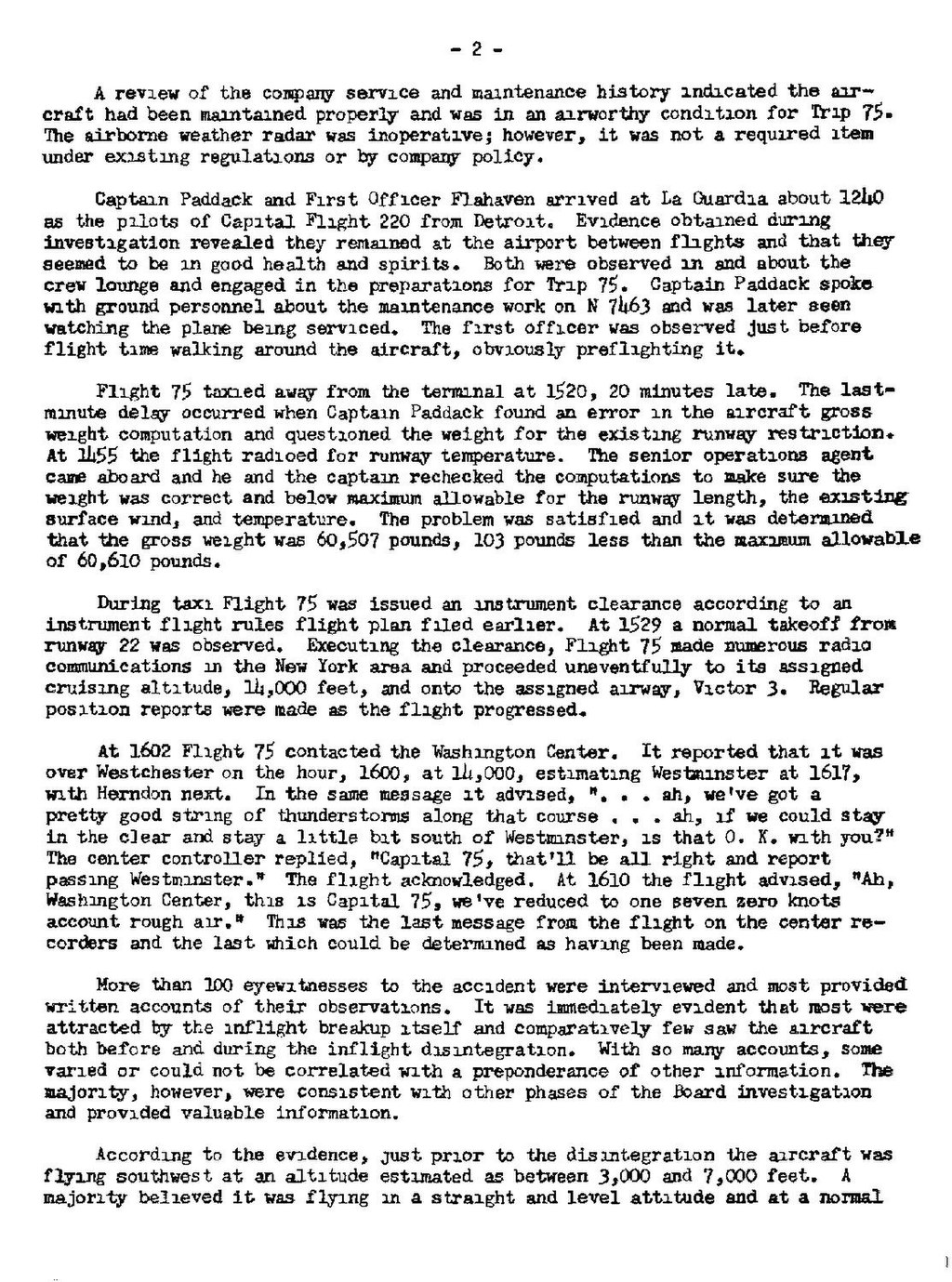- 2 -
A review of the company service and maintenance history indicated the aircraft had been maintained properly and was in an airworthy condition for Trip 75. The airborne weather radar was inoperative; however, it was not a required item under existing regulations or by company policy.
Captain Paddack and First Officer Flahaven arrived at La Guardia about 1240 as the pilots of Capital Flight 220 from Detroit. Evidence obtained during investigation revealed they remained at the airport between flights and that they seemed to be in good health and spirits. Both were observed in and about the crew lounge and engaged in the preparations for Trip 75. Captain Paddack spoke with ground personnel about the maintenance work on N 7463 and was later seen watching the plane being serviced. The first officer was observed just before flight time walking around the aircraft, obviously preflighting it.
FLight 75 taxied away from the terminal at 1520, 20 minutes lat. The last-minute delay occurred when Captain Paddack found an error in the aircraft gross weight computation and questioned the weight for the existing runway restriction. At 1455 the flight radioed for runway temperature. The senior operations agent came aboard and he and the captain rechecked the computations to make sure the weight was correct and below maximum allowable for the runway length, the existing surface wind, and temperature. The problem was satisfied and it was determined that the gross weight was 60,507 pounds, 103 pounds less than the maximum allowable of 60,610 pounds.
During taxi Flight 75 was issued an instrument clearance according to an instrument flight rules flight plan filed earlier. At 1529 a normal takeoff from runway 22 was observed. Executing the clearance, Flight 75 made numerous radio communications in the New York area and proceeded uneventfully to its assigned cruising altitude, 14,000 feet, and onto the assigned airway, Victor 3. Regular position reports were made as the flight progressed.
At 1602 Flight 75 contacted the Washington Center. It reported that it was over Westchester on the hour, 1600, at 14,000 estimating Westminster at 1617, with Herndon next. In the same message it advised, "...ah, we've got a pretty good string of thunderstorms along that course...ah, if we could stay in the clear and stay a little bit south of Westminster, is that O.K. with you?" The center controller replied, "Capital 75, that'll be all right and report passing Westminster." The flight acknowledged. At 1610 the flight advised, "Ah, Washington Center, this is Capital 75, we've reduced to one seven zero knots account rough air." This was the last message from the flight on the center recorders and the last which could be determined as having been made.
More than 100 eyewitnesses to the accident were interviewed and most provided written accounts of their observations. It was immediately evident that most were attracted by the inflight breakup itself and comparatively few saw the aircraft both before and during the inflight disintegration. With so many accounts, some varied or could not be correlated with a preponderance of other information. The majority, however, were consistent with other phases of the Board investigation and provided valuable information.
According to the evidence, just prior to the disintegration the aircraft was flying southwest at an altitude estimated as between 3,000 and 7,000 feet. A majority believed it was flying in a straight and level attitude and at a normal
